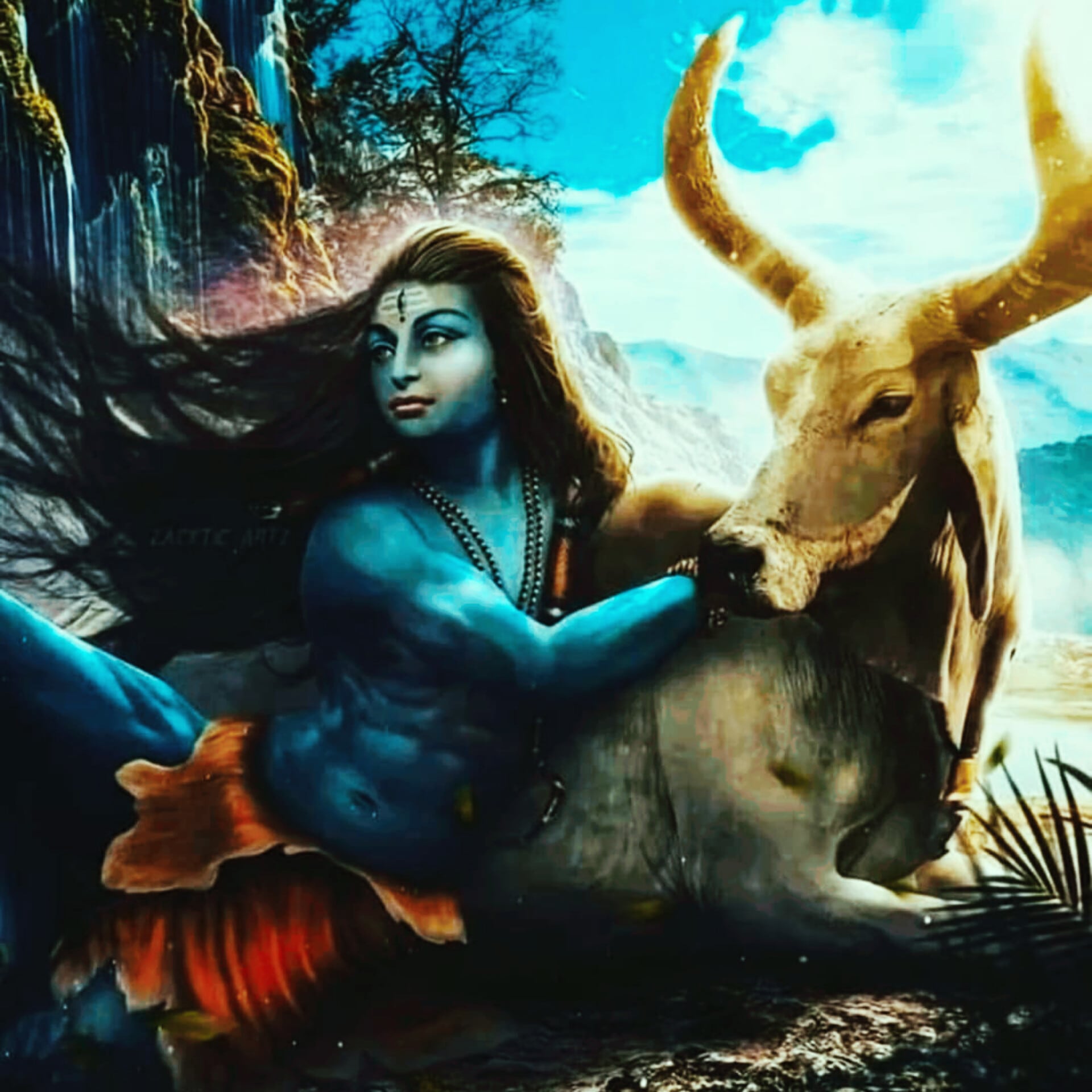What are the 64 forms of Shiva -Understanding the Many Faces of the Divine ?
Shiva is one of the principal deities in Hinduism and is known as the destroyer or transformer of the universe. In Hindu mythology, Shiva is believed to have 64 forms or manifestations that symbolize his various attributes and characteristics. Each form of Shiva has a unique significance and is revered by devotees in different ways. In this article, we will explore the 64 forms of Shiva and their significance in Hinduism.
Aghora Shiva – The form of Shiva that represents the destructive and fearsome aspect of the deity. Aghora Shiva is associated with the cremation grounds and is believed to grant liberation to the departed souls.
Anugraha Shiva – The form of Shiva that represents grace and compassion. Anugraha Shiva is often depicted as a benevolent deity who showers blessings on his devotees.
1. Ardhanarishvara – The form of Shiva that represents the unity of male and female principles. Ardhanarishvara is a half-male and half-female form of Shiva and represents the harmonious union of opposites.
2. Avadhuta Shiva – The form of Shiva that represents the ascetic and renunciant aspect of the deity. Avadhuta Shiva is often depicted as a naked ascetic who lives in the wilderness and is detached from worldly possessions.
3. Bhairava Shiva – The form of Shiva that represents the fierce and terrifying aspect of the deity. Bhairava Shiva is associated with destruction and is believed to protect his devotees from evil forces.
4. Bhikshatana Shiva – The form of Shiva that represents the wandering ascetic who begs for alms. Bhikshatana Shiva is often depicted as a naked ascetic who carries a begging bowl and a staff.
5. Dakshinamurti Shiva – The form of Shiva that represents the teacher and guru. Dakshinamurti Shiva is often depicted as a seated figure who imparts spiritual knowledge to his disciples.
6. Durvasa Shiva – The form of Shiva that represents anger and wrath. Durvasa Shiva is associated with fierce temper and is believed to punish those who offend him.
7. Ganesha Shiva – The form of Shiva that represents the elephant-headed god Ganesha. Ganesha Shiva is often depicted as a merged form of Shiva and Ganesha and is believed to grant success and prosperity.
8. Gangadhara Shiva – The form of Shiva that represents the bearer of the river Ganges. Gangadhara Shiva is often depicted as a figure with the river Ganges flowing from his matted hair.
9. Hanuman Shiva – The form of Shiva that represents the monkey god Hanuman. Hanuman Shiva is often depicted as a merged form of Shiva and Hanuman and is believed to grant strength and courage.
10. Hara Shiva – The form of Shiva that represents the destroyer. Hara Shiva is associated with destruction and is believed to bring an end to the cycle of birth and death.
11. Jalandhara Shiva – The form of Shiva that represents the slayer of the demon Jalandhara. Jalandhara Shiva is often depicted as a fierce warrior who carries a trident and a sword.
12.Kalantaka Shiva – The form of Shiva that represents the conqueror of death. Kalantaka Shiva is associated with immortality and is believed to grant liberation from the cycle of birth and death.
13. Kala Bhairava Shiva – The form of Shiva that represents the lord of time. Kala Bhairava is often depicted as a fierce warrior who holds a sword and a shield and is believed to control the flow of time.
14. Kankala Shiva – The form of Shiva that represents the lord of skeletons. Kankala Shiva is associated with death and is believed to preside over cremation grounds.
How to Chant Shiva Panchakshari Mantra
15. Kapardi Shiva – The form of Shiva that represents the deity with matted hair. Kapardi Shiva is often depicted as a figure with long, matted hair and is believed to be the source of all creativity.
16. Khandoba Shiva – The form of Shiva that represents the deity worshipped by the Dhangar community in Maharashtra. Khandoba Shiva is often depicted as a warrior with a sword and a shield and is believed to protect his devotees from danger.
17. Lingodbhava Shiva – The form of Shiva that represents the emergence of the lingam or the phallic symbol. Lingodbhava Shiva is often depicted as a figure emerging from a lingam and is believed to be the source of all creation.
18. Mahadeva Shiva – The form of Shiva that represents the supreme god. Mahadeva Shiva is associated with the highest level of consciousness and is believed to be the source of all existence.
19. Mahakala Shiva – The form of Shiva that represents the lord of time and death. Mahakala Shiva is often depicted as a fierce warrior who holds a trident and a sword and is believed to control the cycle of birth and death.
20. Mahayogi Shiva – The form of Shiva that represents the supreme ascetic. Mahayogi Shiva is often depicted as a seated figure with matted hair and is believed to be in a state of deep meditation.
Click here To Be Continue in Next Par : 2
Also Read If you intrested about Godess Mahalakshmi Devi Story
